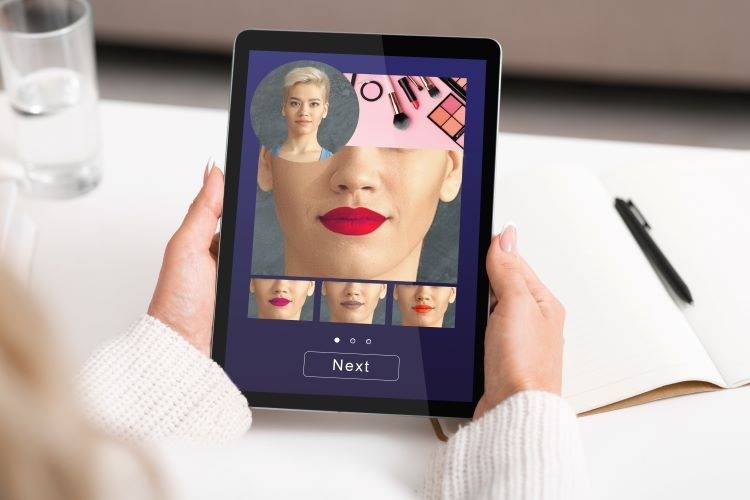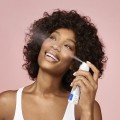A 'continued evolution': The rise of 3D beauty making over cosmetics

As the global cosmetics products industry is anticipated to reach €766.6 billion ($805.61bn) by 2023, according to Orbis Research, beauty and personal care brands are entering a new era of online cosmetics to introduce digital applications and build consumer engagement.
Brands across the globe are dipping their toes into the latest advances in digital cosmetics and moving from digitalisation to virtualisation. From the metaverse and NFTs (non-fungible tokens) to Web 3, brands are delving into online life beyond the traditional platform-based model to reach a deeper level of engagement through immersing consumers in the brand’s vision and product portfolio.
3D beauty
In June 2022, L’Oréal entered the metaverse with cosmetics line NYX Professional Makeup introducing an avatar collection to showcase makeup creations. Partnering with The Sandbox metaverse and blockchain laboratory People of Crypto, the brand conceptualised a global partnership with 3D artists through which it is set to invite 3D beauty creators to join its community, increase aptitude in digital makeup and redefine beauty in the metaverse.
The metaverse is set to play a big part in the future of global luxury group LVMH, too, as it reportedly gears up to create a virtual shopping experience for Sephora, building on the beauty brand’s use of virtual try-ons using augmented reality.
YSL Beauty is the latest name to launch into Web 3 – the third generation of the World Wide Web – that seeks to offer more personalisation and choice. YSL has unveiled its token-gated page which it says will act as a hub for the brand’s journey along Web 3 where users who follow the brand on Instagram and Twitter can claim their YSL Beauty NFT.
Meanwhile, multinational cosmetics producer Clinique has collaborated with Daz 3D, a software company and non-fungible-community specialist, to create its first NFT makeup campaign which reflects all skin tones, face shapes and hairstyles.
The route to digital cosmetics
Ever since social media introduced a marketing channel for beauty and personal care brands, the role of technology in the digital sphere has been at the forefront of the cosmetics industry.
The ever-evolving functionality and understanding of social media has seen a raft of cosmetics brands leverage its live and engaging appeal to reach consumers 24/7, regardless of geographical location.
As well as constant consumer engagement, a mass of data is now at brands’ fingertips, making targeting customers much easier. Cosmetics companies have a greater understanding of consumers’ preferences, an insight which is now invaluable in shaping campaigns.
“It’s the continued evolution of the shopping experience that will keep marketers on the hunt for the most cutting-edge advances to message and interact,” says Ehrin Ziccardi, co-founder of beauty and influencer agency Beauty Anthologie.
Making a digital mark
Pair the cataclysmic rise of data with the phenomenal trajectory from a number of household legacy names to location-independent online indie names proliferating the sector, and beauty buyers suddenly had a lot more choice. Brands, big and small, needed to stand out from the crowd.
Enter the enigmatic and diverse digital beauty world. From Instagram Reels to TikTok crazes, SEO know-how and content marketing, cosmetics companies have continued to follow beauty influencers – online. Omnichannel campaigns that connect the physical and virtual worlds are now seen as a smart move for established high-street brands. Shopping experiences are being given a makeover, with brands offering seamless ways for consumers to engage, access information and purchase products.
“As the consumer and shopping patterns evolve, so must the way we present and market cosmetics,” says Neil Petrocelli, co-founder of Beauty Anthologie.
The rise of tech in a changing world
As technology became more sophisticated and consumers’ needs changed, so did the way the cosmetics industry used the online beauty world. Shoppers wanted to experience cutting-edge innovation first-hand without leaving their homes. After all, convenience and increased accessibility were taking shape across other industries, with apps and instant delivery models via the likes of Uber and Deliveroo changing the way we lived our lives.
Try-ons were the next wave of innovation, as consumers called for a reimagining of how they sampled their sought-after cosmetic selections. Brands used virtual reality (VR) and augmented reality (AR) further boosted the shopping experience by offering beauty sampling in an exciting, instant and touch-free way. It’s this fully omnichannel experience that beauty brands are tapping into as a means of connecting their physical and digital spheres, with product innovation increasingly used to connect virtual and real-life worlds.
The cosmetics sphere was forced to rethink as the pandemic saw global lockdowns and the closure of physical beauty spaces. Brands doubled down on their online platforms to remain relevant and reach consumers and a new era took shape – one in which brands showed consumers they were listening and acting.
“In the post-COVID world of sustainability, virtual ‘product’ trials could ultimately replace the traditional in-store tester unit,” Petrocelli anticipates. “Step in a bit further and we have found a built-in makeup artist, offering guidance and undivided attention.”
![Biologique Recherche believes SEA is ready for its haute couture personalised skin care services. [Biologique Recherche]](/var/wrbm_gb_food_pharma/storage/images/_aliases/wrbm_medium/publications/cosmetics/cosmeticsdesign-asia.com/headlines/brand-innovation/biologique-recherche-launches-ultra-luxury-personalised-services-in-thailand/15775842-1-eng-GB/Biologique-Recherche-launches-ultra-luxury-personalised-services-in-Thailand.jpg)
![How will beauty retail evolve? What might products look like? And how will brands bring everything together online and in-store? [Getty Images]](/var/wrbm_gb_food_pharma/storage/images/_aliases/wrbm_medium/publications/cosmetics/cosmeticsdesign-europe.com/headlines/market-trends/cosmeticsdesign-beauty-tech-webinar-with-sephora-shiseido-orveon-and-experts-brainstorm-future/15777921-1-eng-GB/CosmeticsDesign-beauty-tech-webinar-with-Sephora-Shiseido-Orveon-and-experts-brainstorm-future.jpg)
![Content creators on Instagram should be closely looked at as part of future beauty brand growth plans on the platform [Getty Images]](/var/wrbm_gb_food_pharma/storage/images/_aliases/wrbm_medium/publications/cosmetics/cosmeticsdesign-europe.com/article/2022/09/19/instagram-reels-lives-and-video-key-to-creativity-community-and-growth-say-execs/15777369-1-eng-GB/Instagram-Reels-Lives-and-video-key-to-creativity-community-and-growth-say-execs.jpg)
![Many precursors of the metaverse already exist - the likes of Virtual Reality (VR) and Augmented Reality (AR) - but the true potential remains some years off [Getty Images]](/var/wrbm_gb_food_pharma/storage/images/_aliases/wrbm_medium/publications/cosmetics/cosmeticsdesign-europe.com/article/2022/09/13/meta-and-instagram-talk-metaverse-beauty-potential-over-next-10-15-years/15765246-2-eng-GB/Meta-and-Instagram-talk-metaverse-beauty-potential-over-next-10-15-years.jpg)













